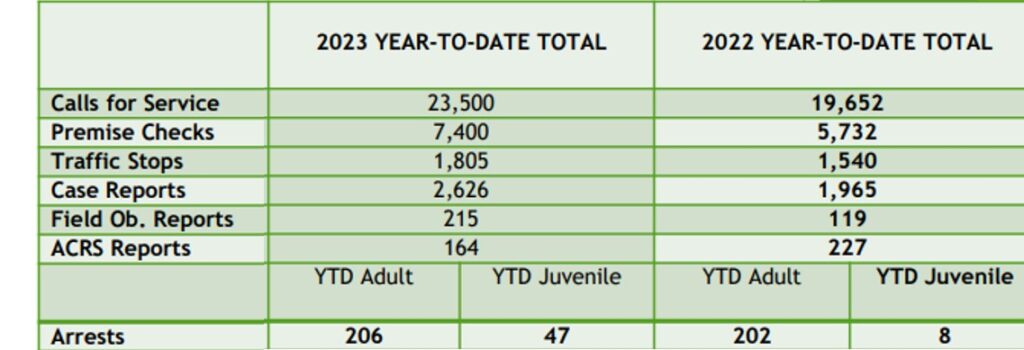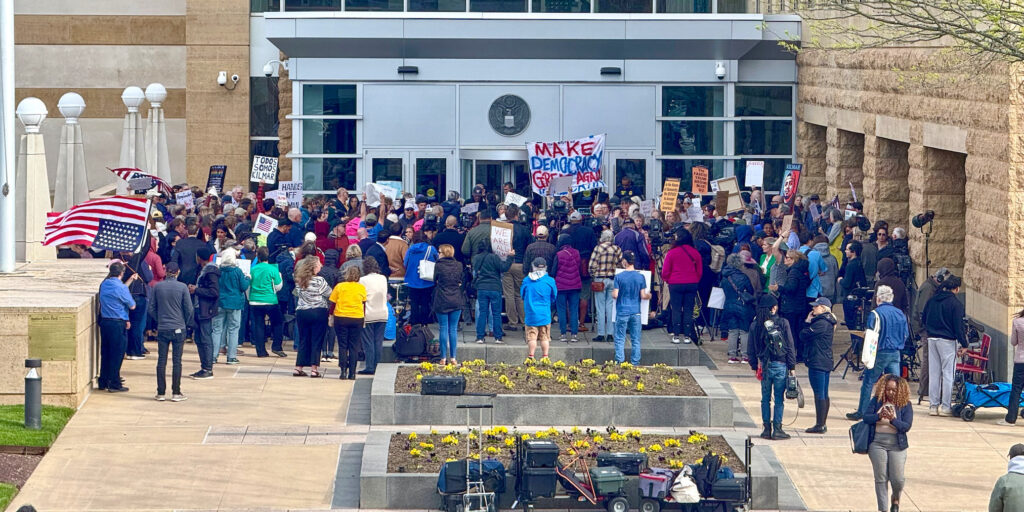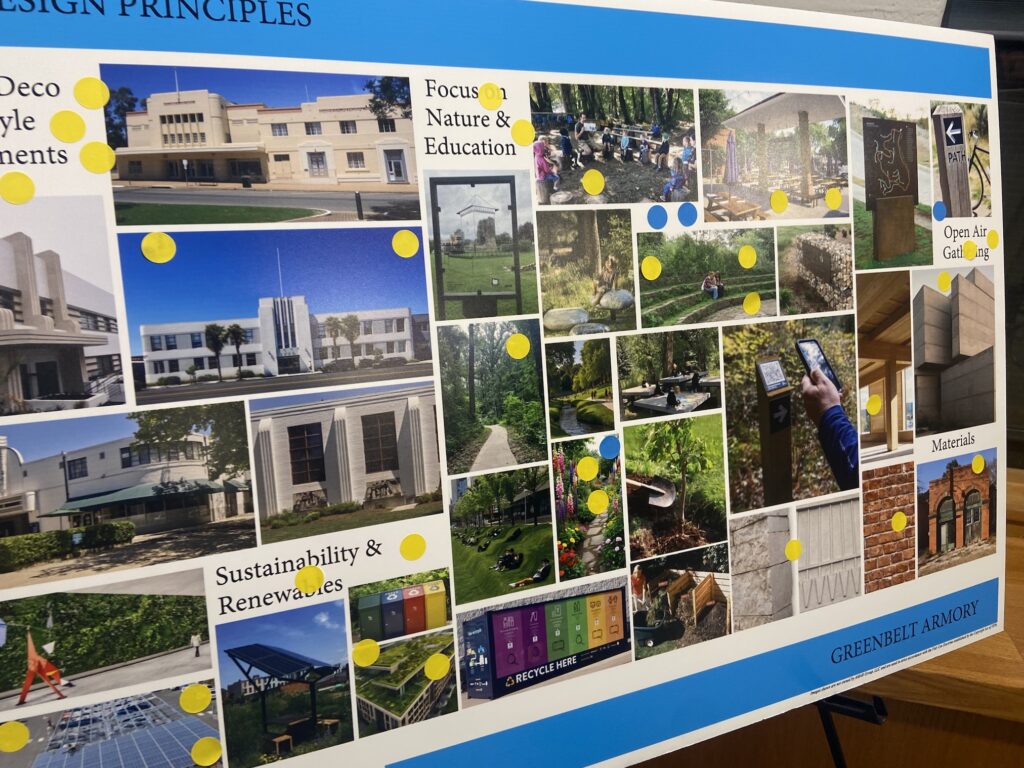The big news of the Greenbelt City Council’s public safety briefing on Wednesday, October 11 was not unexpected. Crime is up overall by 34 percent, though violent crime has held steady compared to last year. The big driver for the increase is auto-related crime (465 percent higher than the same time last year, which was itself historically high). Auto theft has particularly escalated. In that category, vulnerable brands like Hyundai and Kia comprised 60 percent of vehicles stolen this year, though carjackings were down by 47 percent.
Citizen robberies (non-violent) increased from 31 to 42 a year to date over 2022. The geographical distribution of crimes remains typical, with more instances of all offences occurring to the west of Kenilworth Avenue.
Auto Crime and Juveniles
Juveniles are the perpetrators of much of the auto-related crime. Recent changes by Maryland in the treatment of juvenile offenders essentially sends the youths back home, only to re-offend. Of 47 juvenile arrests, many individuals were re-arrested several times – some up to five times.
In response to a question from Councilmember Judith Davis, Deputy Chief Tim White, Greenbelt Police Department, estimated that the 47 arrests amounted to perhaps half that number of separate offenders. With Maryland’s new legal process for juveniles, the punishment for an offence is six-month’s probation and for multiple offences, up to one year of probation. A felony carries one year of probation. Greenbelt Police Chief Richard Bowers characterized the Maryland statute as well intentioned, but with unforeseen consequences.
Bowers informed council that it seemed likely that the Maryland State Assembly would address this in the next legislative session, with council inclined to communicate their position on it to the legislature.
Not Giving Chase
In reference to the recent deaths of four non-resident youths who were driving recklessly in a vehicle stolen in Greenbelt, White noted that Greenbelt officers do not pursue fleeing vehicles because the danger to all concerned – officers, bystanders, other motorists and those fleeing – is too great. They attempt to stop the car but if it accelerates away, they don’t chase but instead attempt to identify and locate the vehicle by other means.
Juvenile Crime
Greenbelt’s police department and recreation department have taken encouraging steps to reach out to young people at risk of criminal behavior. A successful public safety explorers camp this year involved 10 young offenders and exposed them for a week to various aspects of public safety and emergency services. Plans are in progress to repeat and expand a similar program next year.
The city is also enhancing its drop-in programs at the Springhill Lake Recreation Center year-round to engage youngsters positively. Bowers described their concept of a youth services position, an officer who works with at-risk youths and their parents and follows up on repeat offenders. Captain Jermaine Gulledge noted that they also expected to expand the explorer program next year and open it to middle school students.
Truancy Is Related
Schools also have a truancy issue that is almost certainly interrelated with crime.
School officials have no power to stop students walking away and there are well-known gathering places around Eleanor Roosevelt High School. Greenbelt Middle School has a county school resource officer, and magnetometers (weapons detectors) are scheduled for installation at the high school.
Councilmember Konrad Herling asked what the challenges were in dealing with Hispanic youth and the increasing percentage of Hispanic residents. Bowers described a push to provide bilingual materials and noted that Officer Erick Alvarez is a bilingual community officer who interacts extensively with Hispanic families in his assigned area. Some officers speak French or Bengali.
23, 500




